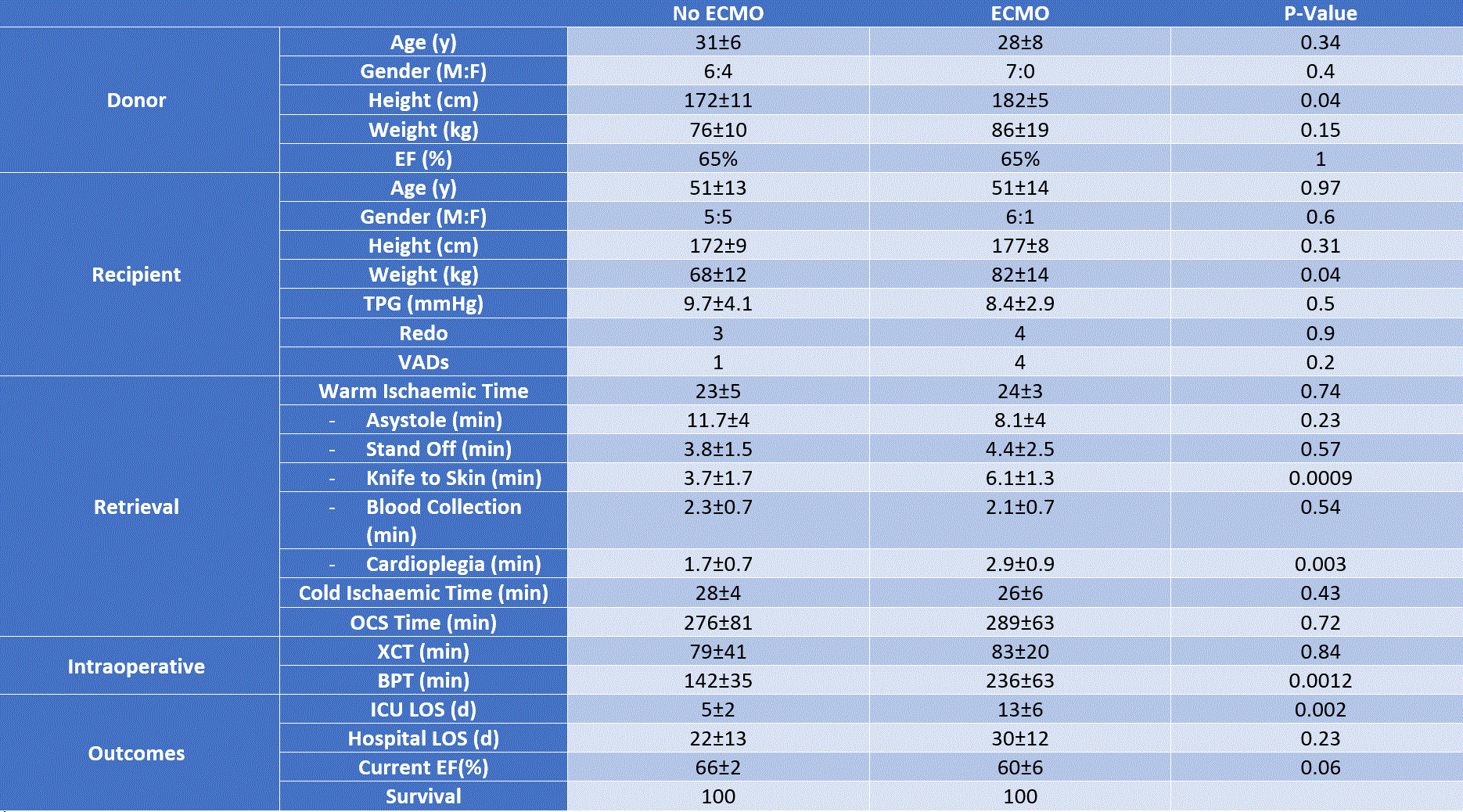ECMO use post DCD Heart Transplantation: A Retrospective Study
Hong Chee Chew1, Arjun Iyer1, Mark Connellan1, Emily Granger1, Christopher Hayward1, Andrew Jabbour1, Andrew Jabbour1, Paul Jansz1, Anne Keogh1, Eugene Kotlyar1, Phillip Spratt1, Peter Macdonald1, Kumud Dhital1.
1Heart and Lung Clinic, St Vincent's Hospital, Sydney, Australia
Whilst DCD heart transplantations have been shown to be safe with over 65 cases performed between UK and Australia, our unit has noticed a higher rate of ECMO use within this cohort. This retrospective study aimed to identify key factors contributing to ECMO use including outcomes.
Method: Between 2014 and 2017, 18 heart transplants were performed from DCD donors using machine perfusion (MP) for transport and resuscitation. Recipients were stratified into two groups based on early ECMO use. Donor data were collected using referral paperwork; retrieval data from local database and recipient data extracted from hospital medical records. Key donor and retrieval factors were identified and compared between the two groups (including. timing of withdrawal, MP duration), intraoperative details, and post-operative outcomes.
Results: 7 recipients required ECMO support post-operatively. Baseline demographics for donor and recipient between both groups were similar. The time interval between circulatory arrest (CA) and institution of cardioplegia was significantly longer in the ECMO group, due mainly to a longer delay between CA and knife to skin time when compared to non-ECMO group. Cold ischaemic time and time on MP were similar in both groups with poorer lactate recovery in the ECMO group when compared to the non ECMO group. Intraoperatively, ECMO group required longer bypass time and in the post-operative period require significantly longer stay in ICU. All recipients regained normal graft function and overall survival was 100% in both groups.

Conclusion: ECMO utility in our cohort appears to correlate with prolonged asystole to cardioplegia time, largely due to delays during transportation of donor to the operating table. This is associated with delayed graft recovery. However, all hearts were able to be recovered to normal cardiac function despite ECMO use, and there appears to be no impact on short term survival.
